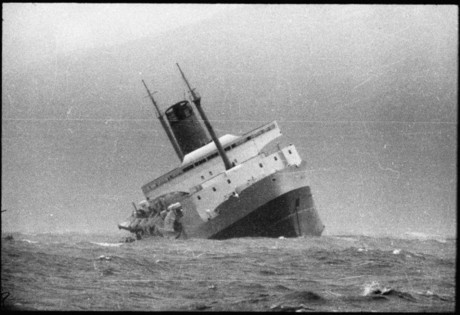The day the Wahine sank

Morse code was the only available method of communication on the day the TEV Wahine sank in Wellington harbour.
When the TEV Wahine sank in Wellington Harbour on 10 April 1968 — New Zealand’s worst maritime disaster in modern times — Murray Lambert was working as a radio technician for the Post Office, keeping the Morse code and voice transmitters and receivers running at the radio station ZLW on Tinakori Hill. A weather front had Wellington in its thrall and created chaos over four days, including knocking out the local power grid.
Lambert remembers it being “very wet, very windy and frightening with pine trees crashing over and tearing apart the station power cables”.
Meanwhile, the radio technicians had to power the receiving equipment with only a small petrol generator sitting outside in the rain with plastic bags over the power plugs to stop them shorting out.
The Post Office Radio Operators were receiving messages from the stricken Wahine, but couldn’t see the drama on the harbour due to the heavy rain and cloud.
“The messages were all in Morse code — as the Wahine was beyond the range of coastal voice transmitters,” said Lambert.
Voice transmissions were exchanged by the ship with Beacon Hill Harbour Radio as the situation developed.

After the Wahine’s crew relayed they were sinking and would abandon ship, Lambert said the ship started transmitting a continuous SOS signal, which stopped only when the ferry toppled over.
Morse code messages were broadcast on the 500 KHz international frequency, still in use in New Zealand up until 1993, when the Maritime Operation Centre (Maritime Radio Service) began operations.
Brendon Comerford, Maritime Operations Centre Manager, said that communications technology has come a long way since the Wahine. In 1968, New Zealand did not have national operations centres to coordinate a maritime response and maritime radio communications.
Maritime NZ now provides the Rescue Coordination Centre NZ (RCCNZ) and the Maritime Radio Service. RCCNZ coordinates response to all distress beacon alerts and major search and rescue operations in New Zealand’s search and rescue region. The Maritime Radio Service operates the national maritime radio operations centre.
Both operate round the clock and are located next to each other in Lower Hutt.
“The most significant thing is the speed of communications these days,” said Comerford. “The main difference between 1968 and now is you have multiple ways to raise the alert if you get into trouble. EPIRBs, VHF radios, cellphones and personal locator beacons are just a few examples.”
However, what hasn’t changed is that every rescue situation has its own challenges.
“You have to remember there were multiple factors on the day the Wahine sank — most notably that it happened during the strongest storm Wellington’s ever seen!” said Comerford.
Please follow us and share on Twitter and Facebook. You can also subscribe for FREE to our weekly newsletter and bimonthly magazine.
RFUANZ report: setting the frequency for success in 2025
Last year brought a lot of internal change for RFUANZ, but the association has hit the ground...
ARCIA update: an extended event calendar for 2025
With the addition of Tasmanian events and a conference in Adelaide in September, 2025 will see...
ARCIA update: plans for 2025
ARCIA will be holding a mixture of workshop, conference and networking events in 2025, in the...





